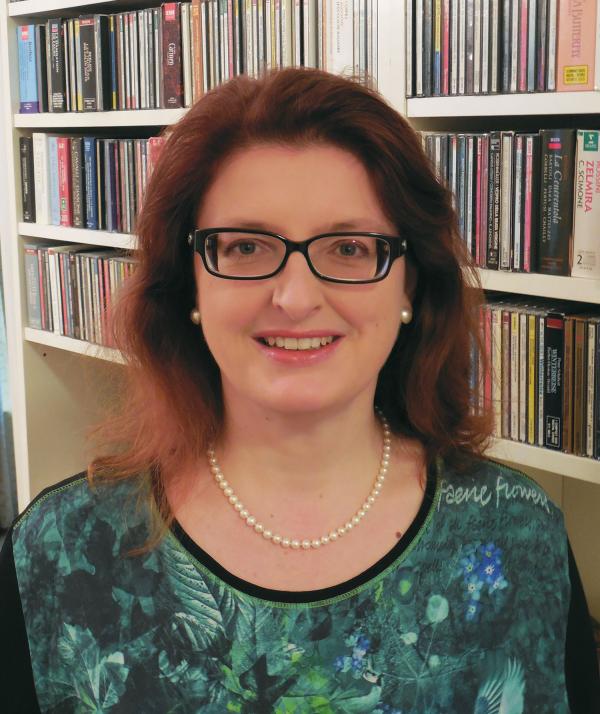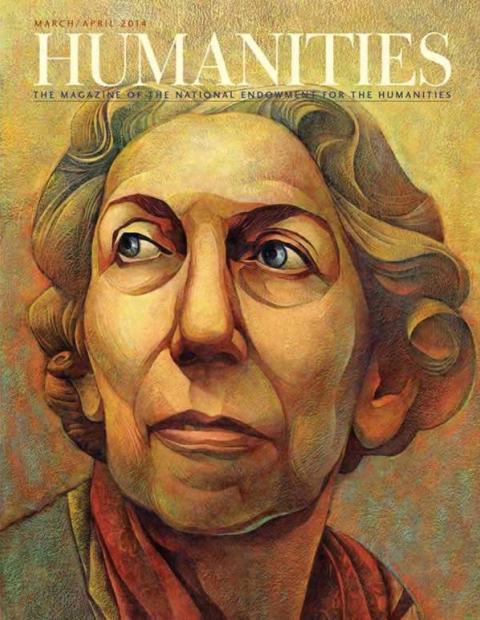For this round of IQ, we’re humming along with Annegret Fauser, Cary C. Boshamer Distinguished Professor of Music and adjunct professor in Women’s and Gender Studies at the University of North Carolina at Chapel Hill. As a musicologist, Fauser focuses on French and American music during the nineteenth and twentieth centuries. She previously received NEH support to host a conference on opera in Paris from the July Revolution to the Dreyfus Affair. Her latest book, written with the help of a NEH summer stipend and fellowship, is Sounds of War: Music in the United States during World War II (Oxford, 2013).
What was classical music’s status in American culture when the war broke out? Highbrow? Lowbrow?
Highbrow, for sure, but also middlebrow. By the time the U.S. entered the war, a broad audience for classical music and opera had been created by a decade of radio and records. The New Deal’s Federal Music Project also widened access and participation. Music appreciation classes were popular too. From today’s vantage point, it is hard to imagine the ubiquity and relevance that classical music had in the U.S. during the 1930s and ’40s.
If you were a classical musician and drafted, were you more likely to end up in a military band or an infantry platoon?
That depended on whether, in civilian life, you were a rank-and-file music teacher or a famous concert pianist. It also depended on the services. Generally speaking, if you enlisted in the Navy or Marines, especially early on in the war, band duty was pretty much a safe bet. If you were drafted into the Army, especially later in the conflict, band duty was much less likely. But there were plenty who saw combat, including the famous American Indian opera singer, Ish-ti-Opi, who served as a captain in the Eighth Air Force. He sustained severe injuries that ended his musical career.
USO sent classical musicians overseas to perform for troops. What might a show consist of?
Classical music—with no attempt to patronize audiences by changing the repertoire: Jascha Heifetz played Bach, Lili Pons sang Verdi, and Yehudi Menuhin performed Rimsky-Korsakov. Of course, there were virtuosic show pieces and sentimental favorites (Schubert’s “Ave Maria” made the top of the list), but in the end, programs were not much different from civilian concert halls.
How were these performances received by the soldiers?
With great enthusiasm—which, at first, surprised the armed forces leadership who had expected that only Tin Pan Alley and jazz would attract the troops.
What accounted for the enthusiasm?
If the musicians were female, good looks trumped musical style. The universal draft also meant that the armed forces consisted of a representative cross section of the U.S. male population. Men who attended concerts in civilian life clamored rather loudly for classical music. And last—but not least—any entertainment was better than none, especially for troops in the South Pacific or North Africa.
What’s the Army Song Book?
The grandmother of all service-specific communal song collections in the American military. It was first developed in 1918 and then revived in 1941 as a tool to encourage active music-making as a way to build morale. The surgeon general also supported communal singing as a way to keep servicemen from visiting prostitutes and picking up STDs. Other services followed suit with their own song collections, from the Air Corps Songs to the WAVES’s Marching to Victory.
What’s the Army Hit Kit?
Monthly mailings of sheet music for current songs, especially radio hits. “When the going gets tough, we like to pick up a song sheet,” a staff sergeant reported. That they were distributed during mail call meant that even soldiers who did not get any letters received the Army Hit Kit at least once a month.
How else did the troops get access to classical music?
V-disks, the Armed Forces Radio Service, and private record collections. Let’s not forget that this is the time before iPods and CDs. Recorded music was often shared in informal or formal “concerts” put on by soldiers, who played their beloved recordings on hand-cranked gramophones. One of my favorite stories involves marines in tents in the South Pacific huddled around a gramophone listening to Sibelius’s Finlandia.
How did the Office of War Information use classical music as propaganda?
World War II was a culture war as much as a military conflict. Considered a marker of refined civilization, classical music served as a weapon in the fight over moral and cultural superiority. It was the OWI’s job to convince the Allied and Axis Powers alike that America was the new home of great culture.
Favorite piece of music from World War II?
The cowgirl in me finds it hard to decide between Rogers and Hammerstein’s Oklahoma! and Copland’s Rodeo, although I am fascinated also by Marc Blitzstein’s Airborne Symphony.
Play any instruments?
Well, there is the piano on which I started out . . . nowadays, as a writer, I play a different kind of keyboard.
If you were forced to sing karaoke, you would pick?
For World War II karaoke—and if gender bending were allowed to discover my inner bass—I would be Paul Robeson in his rousing rendering of the new Soviet anthem of 1943. It’s a catchy tune, beautifully performed. For modern times, I would clone myself into three and become Alicia Keys, Queen Latifah, and Kathleen Battle as they sing “Superwoman” at the 2008 American Music Awards.




